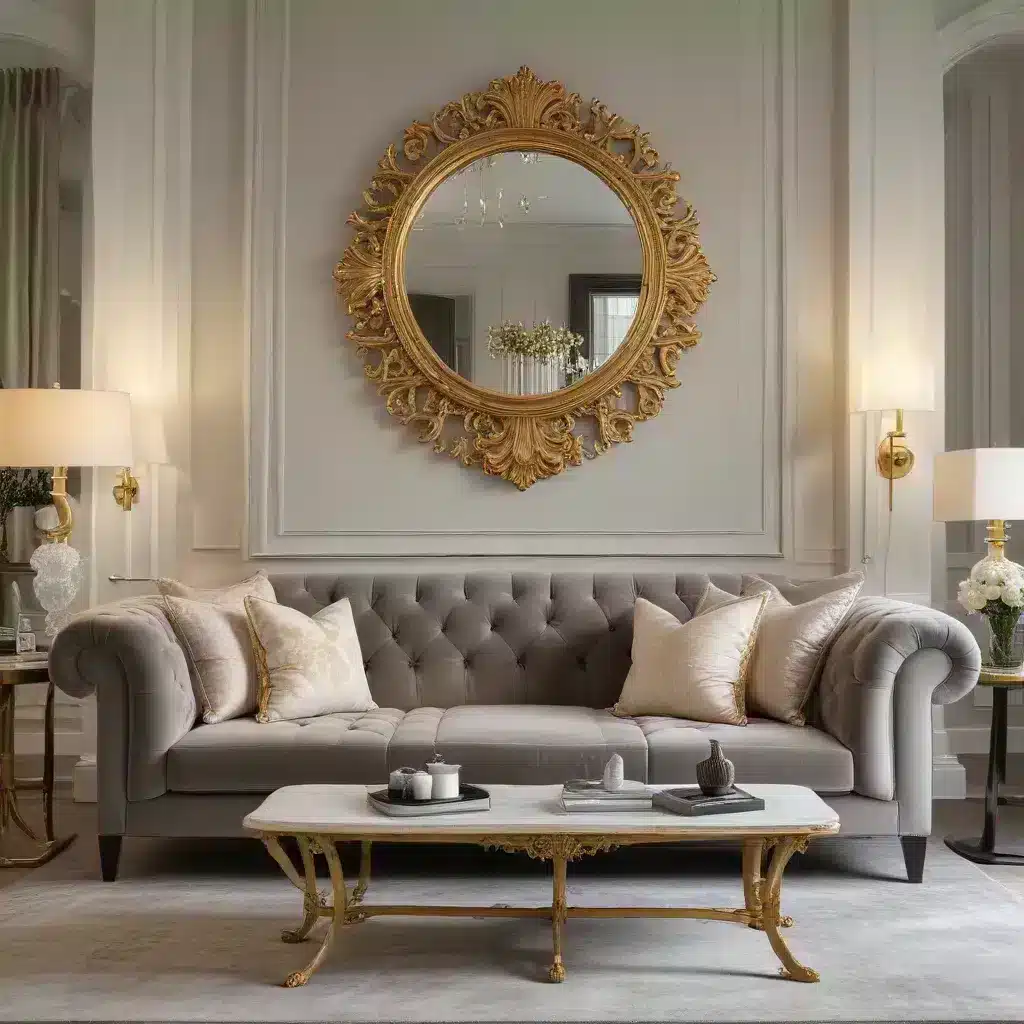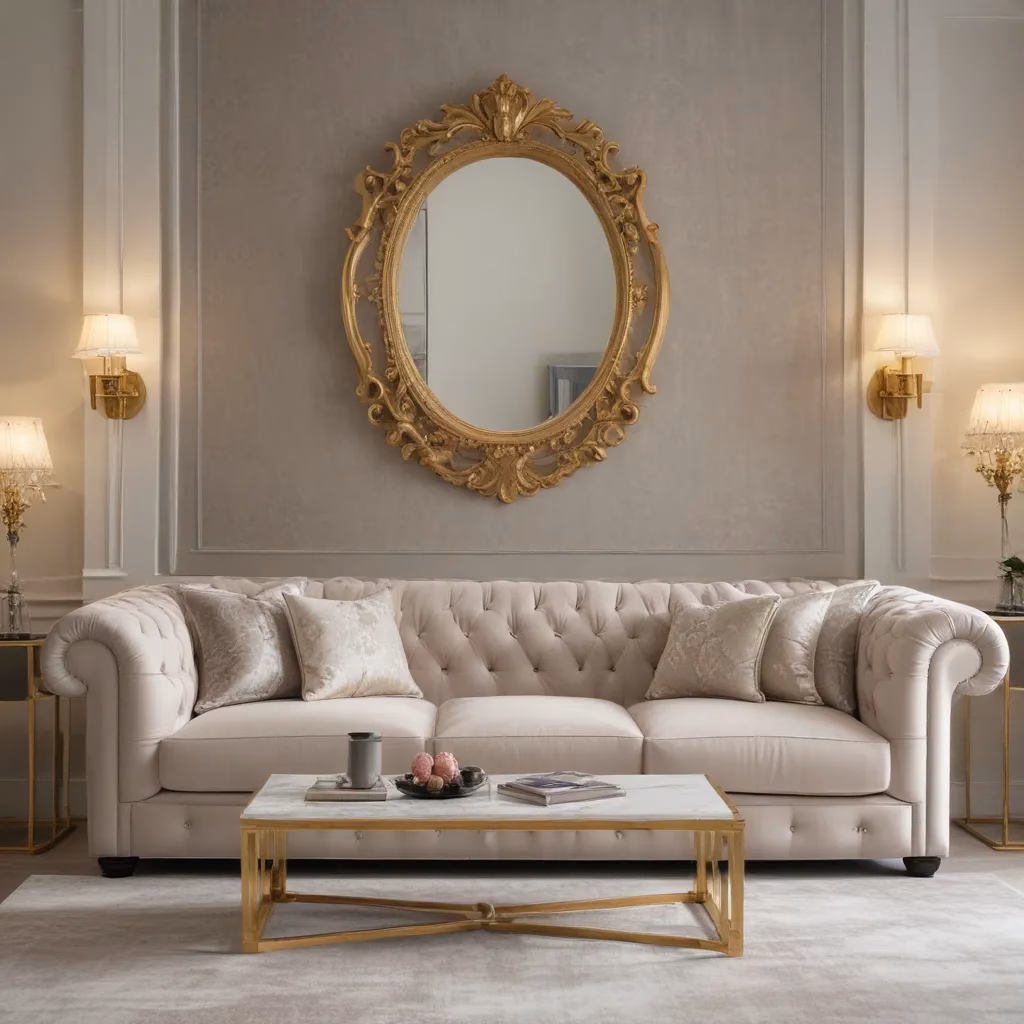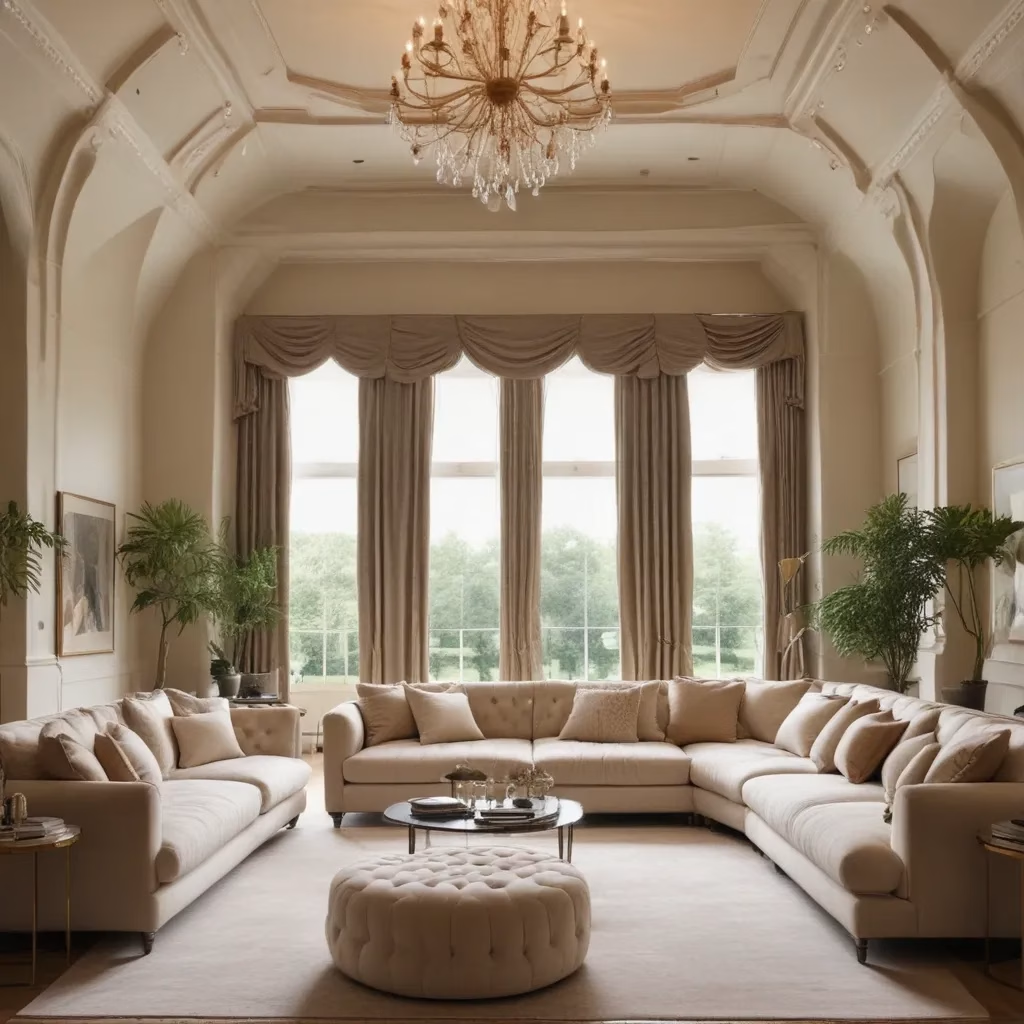
The Art of Sofa Selection: Finding Your Perfect Match
As a furniture specialist with years of experience, I’ve seen countless homeowners struggle with selecting the right sofa for their living spaces. It’s not just about finding a piece that looks good – it’s about discovering a sofa that complements your lifestyle, enhances your comfort, and stands the test of time.
When I’m guiding clients through the selection process, I always start by asking them to consider their daily routines. Do you love to curl up with a good book? Are you a Netflix binge-watcher? Or perhaps you frequently entertain guests? Your answers to these questions will significantly influence the type of sofa that’s best for you.
One of the most crucial factors in sofa selection is size. I can’t tell you how many times I’ve seen beautiful sofas that simply overwhelm a room or, conversely, look lost in a large space. As a rule of thumb, I recommend measuring your room and leaving at least 18 inches of space around the sofa for comfortable movement. Remember, a sofa that’s too large can make a room feel cramped, while one that’s too small might not provide adequate seating.
Dimensions That Matter: The Key to Comfort
Let’s talk numbers, shall we? When it comes to sofa dimensions, every inch counts. In my experience, the ideal sofa length for most living rooms falls between 84 and 90 inches. This size comfortably seats three adults and provides enough space for lounging.
Seat depth is another crucial factor that often gets overlooked. I’ve found that a seat depth between 21 and 24 inches works well for most people. However, if you’re tall or love to curl up on your sofa, you might prefer a deeper seat of 25 to 26 inches.
As for seat height, I typically recommend between 17 and 19 inches. This range allows most people to sit comfortably with their feet touching the floor. Remember, these are general guidelines – your personal comfort should always be the ultimate deciding factor.
The Great Cushion Debate: Sink In or Sit Up?
Now, let’s dive into a topic that’s close to my heart – cushions. The type of cushion you choose can make or break your sofa experience. In my years of working with furniture, I’ve come to appreciate the nuances of different cushion types.
Down-filled cushions offer that luxurious, sink-in feel that many people love. They’re incredibly comfortable and mold to your body, creating a cozy nest. However, they require regular fluffing to maintain their shape. I often recommend down-filled cushions to clients who prioritize comfort over low maintenance.
On the other hand, high-resilience foam cushions provide firmer support and maintain their shape well. They’re great for those who prefer a more structured sit and don’t want to fuss with constant fluffing. In my experience, they’re also a good choice for households with children or pets, as they tend to be more durable.
For a happy medium, I often suggest a combination of both – a foam core wrapped in down. This gives you the best of both worlds: the support of foam with the softness of down.
Upholstery: The Skin of Your Sofa
Choosing the right upholstery is like selecting the perfect outfit for your sofa. It needs to look good, feel comfortable, and withstand daily wear and tear. Over the years, I’ve developed a deep appreciation for different upholstery materials and their unique characteristics.
Leather is a classic choice that never goes out of style. It’s durable, easy to clean, and develops a beautiful patina over time. I often recommend leather to families with children or pets because it can withstand spills and scratches better than most fabrics. However, it’s important to note that leather can be cold to the touch initially and may not be ideal for those who prefer a softer, cozier feel.
For a softer touch, I’m a big fan of performance fabrics. These innovative materials are designed to resist stains, fading, and wear. They come in a wide range of textures and colors, allowing you to find the perfect match for your style. In my experience, performance fabrics are a game-changer for households that want the look and feel of luxury fabric without the high maintenance.
Natural fibers like cotton and linen offer a beautiful, organic look. They’re breathable and comfortable but can be more prone to wrinkling and staining. If you love the look of natural fibers but worry about maintenance, consider a blend that incorporates some synthetic fibers for added durability.
The Psychology of Color: Choosing Your Sofa’s Hue
Color plays a crucial role in setting the mood of your living space, and your sofa is often the largest piece of furniture in the room. As such, its color can significantly impact the overall atmosphere. In my years of helping clients select sofas, I’ve observed some interesting trends in color psychology.
Neutral colors like beige, gray, and white are perennial favorites. They provide a versatile backdrop that allows you to easily change your decor with accent pieces. I often recommend neutrals to clients who like to update their look frequently or who are unsure about committing to a bold color.
However, don’t be afraid of color! A richly hued sofa can be a stunning focal point in your living room. Deep blues and greens can create a calming, sophisticated atmosphere, while warm reds and oranges can energize a space. I’ve seen many clients fall in love with colorful sofas they initially thought were too bold.
Remember, the right color for your sofa depends on your personal style, the existing colors in your space, and the mood you want to create. Don’t be afraid to trust your instincts – after all, you’re the one who will be living with this sofa every day.
Sofa Styles: From Classic to Contemporary
The style of your sofa sets the tone for your entire living space. Over the years, I’ve worked with a wide range of sofa styles, each with its own unique charm and character. Let’s explore some popular styles and what they bring to a room.
The Chesterfield sofa, with its distinctive tufted back and rolled arms, exudes classic elegance. I often recommend this style to clients who want to create a sophisticated, traditional ambiance. It works beautifully in formal living rooms or studies, adding a touch of timeless charm.
For a more relaxed, contemporary look, I’m a big fan of the mid-century modern style. These sofas typically feature clean lines, tapered legs, and a low profile. They’re perfect for creating an airy, uncluttered feel in smaller spaces. I’ve found that mid-century modern sofas pair well with a variety of decor styles, making them a versatile choice.
If comfort is your top priority, you might want to consider a sectional sofa. These versatile pieces can be configured to fit your space perfectly, providing ample seating for family and guests. In my experience, sectionals work particularly well in open-plan living areas, helping to define the seating area within a larger space.
For those who love a cozy, laid-back vibe, I often suggest an English roll arm sofa. With its low arms and deep, comfortable seats, this style invites you to sink in and relax. It’s a great choice for family rooms or casual living spaces where comfort is key.
The Devil’s in the Details: Sofa Features That Make a Difference
When it comes to sofas, it’s often the little details that can make a big difference in your day-to-day experience. Over the years, I’ve come to appreciate certain features that can elevate a good sofa to a great one.
One feature I always encourage clients to consider is the arm height. In my experience, an arm height of 7 to 9 inches (measured from the seat) provides comfortable support for most people. It’s high enough to rest your arm comfortably but not so high that it impedes conversation or makes it difficult to lie down.
Another detail that can significantly impact comfort is the back height. I typically recommend a back height between 30 and 36 inches. This range provides adequate support for most people while maintaining a balanced look. Remember, if you’re tall or short, you might prefer a back height at the higher or lower end of this range.
Don’t overlook the importance of legs! The style and height of your sofa’s legs can dramatically affect its overall look. For a modern, airy feel, I often suggest sofas with tall, tapered legs. For a more grounded, substantial look, consider a sofa with shorter, chunkier legs or even a skirted base.
Finally, pay attention to the cushion configuration. A single seat cushion can create a sleek, uninterrupted look, while multiple cushions offer more flexibility in terms of seating arrangements. In my experience, three-cushion sofas tend to be the most versatile, accommodating different numbers of people comfortably.
Maintaining Your Sofa: Tips from a Pro
As someone who’s been in the furniture industry for years, I can’t stress enough the importance of proper sofa maintenance. A well-cared-for sofa can last for decades, becoming a cherished part of your home. Here are some of my top tips for keeping your sofa in top condition:
-
Regular vacuuming: This simple step can make a world of difference. I recommend vacuuming your sofa at least once a week to remove dust, crumbs, and pet hair before they can work their way into the fabric.
-
Rotate cushions: To ensure even wear, rotate and flip your cushions regularly. I suggest doing this every few weeks, or more often if your sofa sees heavy use.
-
Protect from sunlight: Direct sunlight can fade and damage upholstery over time. If your sofa is near a window, consider using curtains or blinds to protect it during the sunniest parts of the day.
-
Address spills immediately: The quicker you act on a spill, the less likely it is to stain. Blot (don’t rub!) spills with a clean, white cloth to absorb as much liquid as possible.
-
Professional cleaning: Even with regular care, sofas benefit from professional cleaning every 12-18 months. This deep clean can remove embedded dirt and refresh your sofa’s appearance.
Remember, different upholstery materials require different care. Always check the manufacturer’s care instructions before cleaning your sofa.
The Future of Sofas: Trends and Innovations
As someone who’s passionate about furniture, I’m always excited to see new trends and innovations in the world of sofas. One trend I’m particularly enthusiastic about is the rise of modular sofas. These versatile pieces can be rearranged to suit different needs and spaces, offering incredible flexibility.
Another exciting development is the integration of technology into sofas. I’ve seen sofas with built-in USB ports, wireless charging pads, and even smart fabrics that can change color or pattern at the touch of a button. While these features might not be for everyone, they’re certainly pushing the boundaries of what a sofa can be.
Sustainability is also becoming increasingly important in sofa design. Many manufacturers are now using eco-friendly materials and production methods. I’m seeing more sofas made with recycled fabrics, sustainably sourced wood, and non-toxic foams. It’s heartening to see the industry moving in a more environmentally conscious direction.
In terms of style, I’m noticing a trend towards softer, more organic shapes. Curved sofas and rounded edges are becoming increasingly popular, offering a softer alternative to the sharp angles of modernist designs.
Making Your Sofa the Star: Styling Tips
Your sofa is likely the largest piece of furniture in your living room, so it’s important to style it in a way that enhances its beauty and complements your overall decor. Here are some of my favorite styling tips:
-
Pillows and throws: These are your best friends when it comes to sofa styling. I love using a mix of different sizes, textures, and patterns to create visual interest. As a general rule, I suggest using odd numbers of pillows – three or five work well for most sofas.
-
Coffee table styling: Your coffee table can help anchor your sofa in the room. I like to use a mix of objects with varying heights – perhaps a stack of books, a vase with flowers, and a decorative object. Remember to leave some empty space to maintain a balanced look.
-
Area rugs: A well-chosen rug can help define your seating area and tie your sofa into the rest of the room. I typically recommend a rug that’s large enough to fit under the front legs of your sofa and any surrounding chairs.
-
Lighting: Good lighting can make your sofa area inviting and functional. Consider a mix of ambient and task lighting. A floor lamp next to the sofa can provide perfect reading light, while table lamps on side tables add a warm glow.
-
Wall art: The wall behind your sofa is prime real estate for art. I love using a large statement piece or a gallery wall to create a focal point. Just be sure to hang your art at eye level when seated on the sofa.
Remember, the key to successful styling is balance. Don’t be afraid to experiment with different arrangements until you find one that feels right to you.
The Personal Touch: Making Your Sofa Your Own
At the end of the day, your sofa should be a reflection of you and your lifestyle. Don’t be afraid to break the rules if it means creating a space that truly feels like home. I’ve seen clients do wonderful things with their sofas – from reupholstering vintage pieces in bold, modern fabrics to customizing standard sofas with unique details.
One client of mine loves to travel and has collected textiles from around the world. We incorporated these into her sofa styling, using them as throws and pillow covers. The result was a completely unique look that told her personal story.
Another client was an avid reader and wanted her sofa to be the perfect reading nook. We chose a deep-seated sofa with high arms, perfect for leaning against, and added a cozy reading lamp and a side table just the right size for a cup of tea and a stack of books.
Your sofa is more than just a piece of furniture – it’s where you’ll make memories, relax after a long day, and spend time with loved ones. So take your time, choose wisely, and don’t be afraid to make it uniquely yours.
For more inspiration and expert advice on all things sofas, be sure to check out Sofa Spectacular. Our team of specialists is always here to help you find your perfect sofa match.



